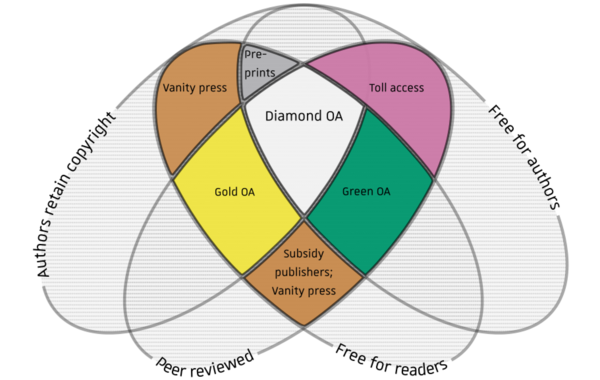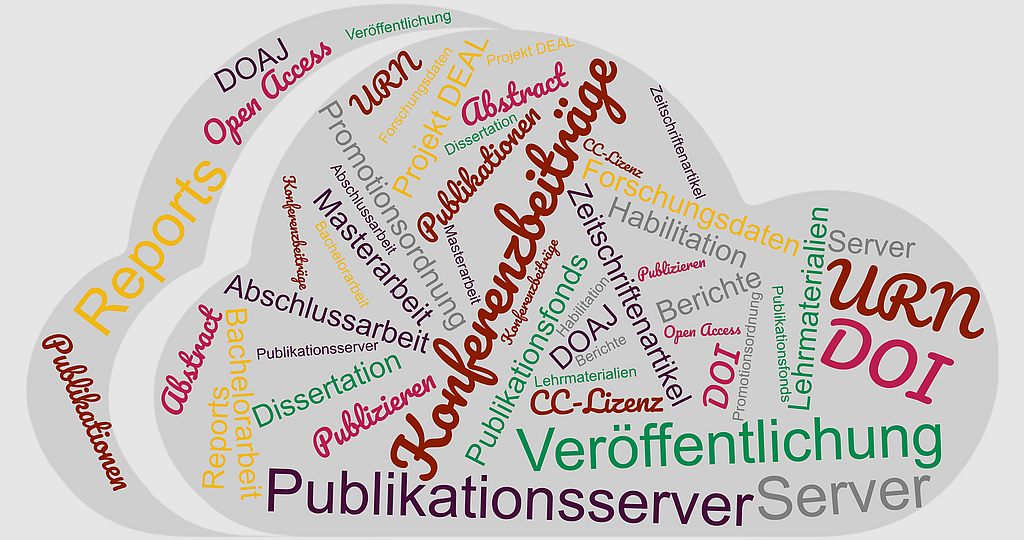Basics about Open Access
On this page you will find a compilation of frequently asked questions about Open Access.
The list of questions will be added to as time goes on. If you have any feedback or suggestions as to which topics should be included or covered in more depth, please feel free to contact us.
-

Diamond Open Access refers to publications and publication platforms that can be read free of charge by all interested parties worldwide, and for which no costs are incurred by the authors. Diamond OA is the simplest and fairest form of OA for all parties involved, since no one is prevented from participating in scientific discourse by payment barriers.
The Wikipedia article provides detailed information on the topic.
-
For information on CC licenses, see the following page.
-
The Directory of Open Access Journals (DOAJ) is a directory of open access journals founded in 2003 at Lund University in Sweden. For inclusion, journals must meet various requirements such as appropriate quality assurance procedures and immediate open access without embargo period.
-
The term Gold Open Access is used for OA first publications in journals, as monographs, or as contributions to edited volumes. The same quality assurance processes are usually followed as for closed-access publications. Detailed information is available on the open access network page.
-
The green road (also known as self-archiving) refers to secondary publication on institutional or disciplinary repositories, sometimes also on the authors' websites. There is an illustrative graphic on the topic on the open access network page.
The Open Policy Finder is a helpful tool that lists the policies of journals regarding secondary publication.
-
Predatory publishing means something like "predatory publishing". Predatory journals are journals that use aggressive advertising and a supposedly professional appearance to invite scientific authors to publish articles in exchange for a publication fee, but organize no or only insufficient quality assurance measures.
The Helmholtz Open Science Office has compiled a FAQ on the subject: https://doi.org/10.2312/os.helmholtz.020
-
For some time now, major scholarly publishers have been fundamentally changing their business model with significant implications for the sciences: Aggregation and the reuse or resale of user traces are becoming relevant aspects of publishing activity. Publishers now sometimes explicitly see themselves as information analysis companies. The business model of publishers is thus changing from content providers to a data analytics business. In this context, the data of scientists (i.e., personalized profiles, access and usage data, dwell times at information sources, etc.) are tracked, i.e., recorded and stored, when they use information services such as literature research.(https://www.dfg.de/resource/blob/174922/5b903b1d487991f2d978e3a308794b4c/datentracking-papier-de-data.pdf)
-
Many publishers offer you as a scientist the possibility to publish your publications in advance as a preprint or in parallel as a postprint.
For assistance and details regarding legal requirements, please visit Journal Policies - Self-Archiving Policy By Journal (EPrints).
Project Sherpa describes and evaluates publishers and their licensing agreements. Authors are often granted the right by the publisher to make the author's version of their article freely available on an "institutional repository".
The publication server of Clausthal University of Technology offers a suitable platform for this so-called "self-archiving".
Details on legal issues can be found on the information platform Open Access at Legal Issues.
What should you pay attention to as an author in the future?
- When concluding a publishing contract, check the clauses on copyrights and licenses.
- Check how the availability of electronic editions will be handled.
If you want to offer your publications via the TUC publication server, please also note the information on our publication server.
Existing initiatives:
